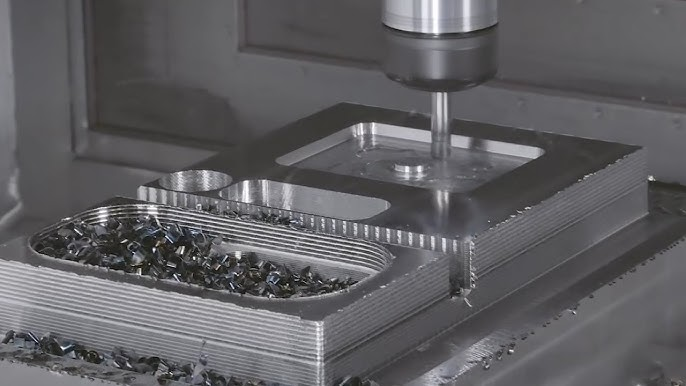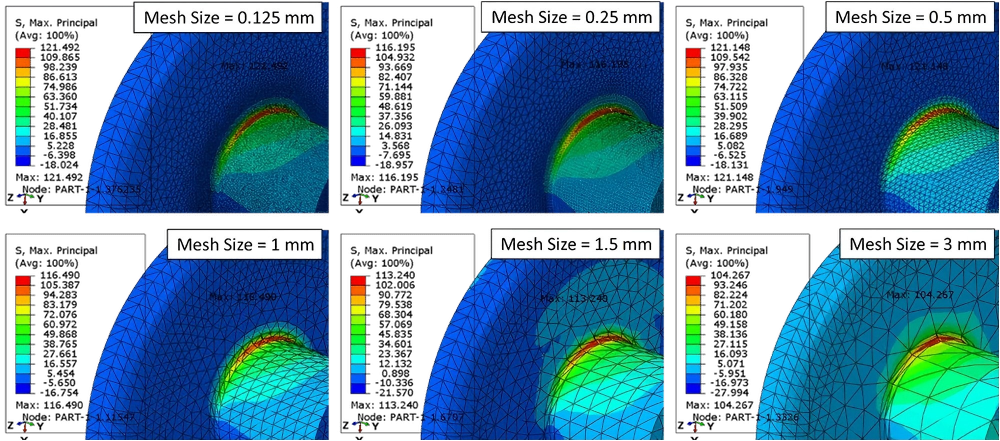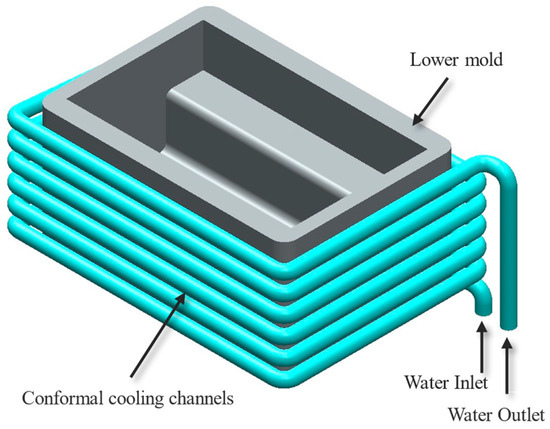Does chrome plating enhance the appeal and durability of an object? While the answer is yes, some questions may arise in your mind regarding its environmental impacts. Yes, businesses that rely heavily on chrome plating may find themselves trapped between regulations and environmental concerns.
This article highlights the risks associated with traditional chrome plating and suggests alternatives that are safer and more cost-effective. It is advisable to opt for smarter chrome plating techniques to avoid falling behind. So, stay connected!

1) Understanding Chrome Plating
“Chrome plating is a metal finishing process where a layer of chromium is plated onto a metal or plastic surface.”
Chrome finish can be done by electroplating, which involves applying an electric current. Well, the end result is a protective layer of a shiny, smooth, hard metallic finish that enhances the item's appearance. In addition, chrome plating also upgrades the value of the product because it looks polished and better finished than ever.
Applications of Chrome Plating
A number of industries utilise chrome plating. Below are a few industries that make use of chrome plating:
- Automobile Industry: This is used on automobile components like bumpers, wheels, grills, and trims in order to give them a glossy look and prevent them from rusting. Moreover, it adds a sleek, stylish touch to the overall automobile design.
- Bicycles and Motorcycles: The frames, exhausts, and any other parts of a bike are chrome-plated for appeal and longevity. Chrome is more appealing for riders because maintaining its cleanliness and shine does not require much work.

- Products Used Particularly In Hardware: Tools, taps, door handles, and other products such as hinges and screws are chrome plated for aesthetic appeal and greater durability. With chrome metal coating, these items become more pleasant to touch and effortless to clean.
- Industry That Uses Electronics: Chrome is used in devices as parts, connectors, and other devices that are decorative. It enhances their aesthetic appeal and resistance to wear and tear. Furthermore, some components benefit from using chrome by having better conductivity.
- Fixtures and Furniture For The Home: Accessories for the bathroom and kitchen, such as chairs and faucets, have their frames plated with chrome for sophistication and modernity. Due to many patterns of chrome, it goes well with a lot of interior decor.
- Tools used in Medicine and Dentistry: Some medical and dental tools have chrome plating for improved hygiene, easier cleaning, and greater strength. Well, this guarantees safe and lasting values in medical places.
Benefits of Using Chrome Plating
There are multiple reasons for its popularity and chrome plating. Some of these include:
+ Resist Corrosive Elements: Chrome helps in protecting the surfaces of metal from incurable rust, which is common in outdoor and humid places. So, this improves the value of the product.
+ Enhanced Appearance: Makes products shiny and gives them a clean, up-to-date professional look. Additionally, chrome adds quality and elegance.
+ Long-lasting Durability: Improves item strength and resistance to wear, scratches, and damage. This decreases the need for frequent repairs or replacements.
+ Heat and Chemical Resistance: Chrome Plating Techniques has the ability to endure high temperature changes alongside the exposure to certain chemicals with having the ability not to break down. This demonstrates usefulness in harsh conditions.
+ Ease of Cleaning: Smooth Surfaces tend to be easier to clean and maintain, especially in the case of household and medical cleaning. Dirt and other stains do not stick easily.
+ Enhanced Performance: For machines or tools, chrome plating increases overall performance by reducing friction in parts. Well, this makes sure parts move easily and efficiently.
2) The Environmental Impact of Chrome Plating
Although chrome plating helps in improving the aesthetic and durability of the product, it does significant damage to the environment. The greatest worry is the use of hexavalent chromium plating, which is a toxic and dangerous chemical. Yes, this substance is dangerously harmful to people and nature.
During the plating procedure, dangerous substances may be released into the atmosphere, water, and even the ground. Moreover, airborne chromic dust crystals may be emitted into the region surrounding the plating works and may be inhaled by workers and local citizens. Apart from this, plating plants discharge wastewater that contains these substances, potentially contaminating rivers and lakes and damaging aquatic life.

If appropriate precautions are not taken, chemicals can also leach into water supplies, rendering land hazardous. Workers in chrome plating plants face significant health hazards.
Exposure to chromium in the form of dust may result in serious health conditions, including skin lesions, respiratory disease, and even cancer. Residents in the vicinity of these factories also have to face the risk of chronic diseases. Due to these risks, there is a shift toward cleaner technologies and safer alternatives to chrome plating.
3) Global Environmental Regulations and Bans
Numerous territories across the globe have started to restrict or even eliminate the potential of chrome plating. For instance, the use of hexavalent chromium carries intense concern. Examples of regions are given below:
- European Union: Has control over chrome plating via REACH legislation. The use of harmful materials is allowed only upon applying for permission.
- United States (California): California will implement a complete ban on hexavalent chromium plating, starting in the next few years.
- Canada: Has strict regulations to reduce emissions and the use of toxic plating chemicals.
- Japan and South Korea: Both countries advocate for the substitution of safer materials and restrict high-risk chrome plating measures.
- Reasons Why These Bans and Restrictions Are Legislated
These policies are being enforced by authorities and other organisations for the following reasons:
- To achieve sustainability targets and reduce environmental impact.
- In order to ensure that public well-being is preserved, especially for workers in the vicinity.
- To adhere to climate initiatives and minimise the pollution from industrial activities.
These measures are guiding industries towards these actions and converting them to safer solutions like green and environment-friendly alternatives.
4) Chrome Plating in China: Regulated but Ongoing
China still has a high chrome plating demand. You know it has importance for the vehicle, electric appliances, and hardware industries. However, the State Council of the People’s Republic of China has set some guidelines to manage and limit chrome plating processes.
It is heard that all companies performing chrome plating are subject to stringent occupational health and safety requirements and environmental regulations. Yes, they require legal permits and are monitored frequently to ensure compliance. Many illegal or informal workshops that do not comply with these requirements seem to face immediate closure.

The state also funds specific industrial regions where chrome plating is allowed under strict guidance. These regions implement more effective methods of pollution management for better environmental protection. Well, a good number of plating firms in China are upgrading their operational systems.
These companies actively spend to replace older devices with newer ones that have a low environmental impact. Also, there is treatment of dirty water and minimal release of harmful air gases. In addition, some have even earned certifications showing they meet national and international environmental standards.
5) Advancements in Cleaner Chrome Plating Technologies
The good thing is that improvements in new alternative chrome plating techniques are emerging. Yes, there is the adoption of less hazardous plating techniques. This change comes with simplified trivalent chromium, a major advantage compared to hexavalent chromium. Workers and neighbouring populations have less exposure to dangerous substances, as trivalent chromium is significantly less toxic.
Besides the less hazardous chemicals, there are many pretreatment works being done in waste treatment facilities. These facilities purify the effluent streams received before, especially toxic metals and harmful chemicals. The emission of these pollutants is prevented, enabling the preservation of water and safeguarding the local environment.
An additional step is to remove unused chemicals. Some companies reuse chemicals instead of throwing them away. These efforts make it possible to lower the generation of waste.
In China, several plating companies are at the forefront of this innovation. They are adopting new technologies that are safe for the environment and are complying with rigorous safety and health requirements. Some of these companies have won national and international awards for their environmentally friendly efforts.
6) Alternatives to Traditional Chrome Plating
More industries are looking into chrome plating alternatives as chrome plating puts a strain on the environment due to health risks and pollution. The newer options still give the same benefits without the environmental drawbacks.
a) Electroless Plating
Electroless plating is a type of coating method that uses a chemical reaction in place of an electric current to change the surface of a metal. This technique flawlessly covers the entire surface regardless of shape. Electronics, automotive, industrial parts, and many other industries use electroless plating due to its good corrosion resistance.
b) Powder Coating
In powder coating, the coating material is in powder form and is baked at elevated temperatures to turn it into a thick protective layer. The process releases no toxic gases and adds a variety of colours and finishes, which is ideal for furniture and outdoor equipment. It can also be used as a protective layer on appliances due to its wonderful durability.
c) Physical Vapour Deposition (PVD)
PVD is a modern developing process that is done in a vacuum chamber. It is used to apply a very thin, permanent, attractive, and protective layer to tools, electronics, watches, and other devices. Due to being environmentally friendly and scratch-resistant, PVD coatings are the preferred choice of many industries.
Well, all of these options are better than chrome plating. They lower pollution, comply with international standards, and enhance occupational safety. Numerous manufacturers are transitioning to these methods to aid in green manufacturing and environmental conservation.
- Picking the Most Suitable Alternative
The right alternative for you will depend on your product’s requirements. If you need an appealing, can withstand corrosion or has a tough finish, there is an option for you. Adopting these methods enables you to remain competitive in this era that prioritises environmental sustainability.
7) The Future of Chrome Plating in a Greener World
- Rise of Sustainable Manufacturing
The activities of chrome plating companies are oriented toward sustainable manufacturing. These involve the use of softer plating chemicals, emission reduction, and responsible waste management. Many of them are also installing fuel-saving appliances in order to reduce the emission of carbon dioxide. All this progress is beneficial for the image of the business and the protection of nature.

- Role of Government Regulations
There is a shift in the operation of the industry due to new laws and policies relating to the environment. The global community has been restricting the use of dangerous pollutants like hexavalent chromium. These regulations compel companies to modernise their systems for better processes, clean technologies, and safer means.
- Demand for Eco-Responsible Partners
There is a growing preference for suppliers who adopt green practices. They seek partners who are openly certified and committed to environmental perseverance. This demand is forcing plating companies to adopt more environmental practices in order to remain competitive and gain trust.
- Moving Toward a Greener Industry
The green future of chrome plating will be determined by innovation and a pledge of sustainability. Industry leaders will be those who respond to new regulations and pay attention to environmental stewardship. A balanced approach will let the industry continue to thrive while ensuring care for the planet.
8) Conclusion
Although chrome plating is still very relevant in the world’s economy, its health and environmental implications have to be considered. There is a growing movement towards seeking cleaner and safer methods in line with escalating international regulations. It is possible to safeguard the Earth through collaboration with partners who adopt eco-responsible practices. Responsibly, chrome plating’s future lies in ensuring effective approaches to sustainable decisions, and it starts with you.







